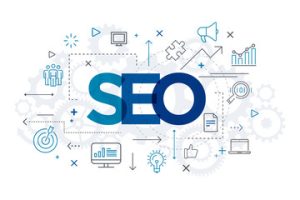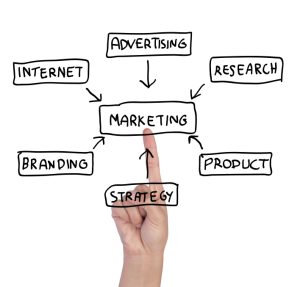The web listens more than it speaks. Every digital interaction feeds a silent system built on understanding, not just visibility. SEO today is not about outsmarting algorithms but aligning with them. It thrives in the unseen, where every word and signal whispers meaning to machines and minds alike.

Search optimization has outgrown its mechanical past. The obsession with keyword density and backlinks has dissolved into something more dynamic. Modern SEO revolves around connection, context, and credibility. It functions less like a puzzle and more like an evolving ecosystem of relevance. Contact Big Cheese Agency LLC for professional help.
The future of SEO lies in perception. Search engines now interpret emotion, tone, and purpose in content. They weigh satisfaction over repetition and user retention over mere clicks. What was once mathematical has become behavioral, blending analytics with anthropology.
Intention now governs discovery. Each search query carries hidden emotional layers—curiosity, urgency, fear, or hope. SEO decodes these motives and crafts responses that feel human. The more precisely it mirrors user psychology, the more powerful it becomes.
AI-driven optimization is quietly redefining how content is created. Algorithms can now learn audience preferences and adapt in real time. Yet, the true mastery lies in human creativity that shapes data into meaningful narrative. The most effective SEO blends intelligence with imagination.
Predictive SEO is emerging as a groundbreaking approach. Instead of waiting for users to search, systems anticipate their needs. This proactive strategy turns websites into digital oracles, guiding people before they even ask. The web is learning to read the future through data trails.
Voice-driven discovery is another frontier shaping new SEO landscapes. Spoken language carries emotion and rhythm that typed queries lack. Optimizing for this natural flow demands empathy in phrasing and tone. The goal is to sound like conversation, not instruction.
SEO’s reach now extends into sensory experiences. With the rise of visual and video-based search, algorithms can recognize colors, faces, and moods. Optimization involves crafting not only what’s said but what’s seen. Images are no longer decoration—they are searchable expressions.
Machine learning models interpret engagement as trust signals. Scroll depth, reading time, and cursor movement reflect genuine attention. These micro-actions redefine ranking values more than backlinks ever did. The invisible behaviors of users now shape the entire structure of visibility.
Authenticity has become the currency of modern SEO. Manipulative tactics like stuffing and cloaking no longer survive. Search engines detect sincerity through linguistic patterns and user satisfaction. The result is an internet that rewards truth more than technique.
Sustainability has entered the conversation too. Lightweight pages that consume less data are favored for efficiency and environmental awareness. SEO now intersects with digital responsibility, where performance optimization aligns with planetary ethics. The greener a website behaves, the better it performs.
Cognitive SEO explores how the brain processes digital content. It considers attention span, readability, and memory retention. Crafting pages that engage thought without fatigue has become a psychological craft. Optimization is now as much about neuro-design as it is about code.
Another emerging layer is emotion-based ranking. Algorithms test how audiences emotionally respond to content through sentiment tracking. A joyful tone, calming rhythm, or reassuring phrasing can influence performance. SEO is learning the language of feeling.
The boundaries between organic and artificial intelligence are dissolving. AI systems curate, test, and optimize content while humans provide authenticity and creativity. This partnership forms a new generation of hybrid optimization. Machines may calculate visibility, but humans sustain value.
Real-time indexing is also shifting the rules. Updates appear in minutes, not days, changing how momentum builds online. The tempo of SEO now matches the pulse of global conversation. Success depends on agility more than strategy.
Micro-intent targeting has become the latest precision tool. Instead of serving one-size-fits-all content, SEO now caters to micro-moments. Each second of user attention is an opportunity for relevance. Timing has become the new ranking factor.
Interactive content is emerging as the next evolution. Algorithms recognize engagement within quizzes, polls, and dynamic experiences. SEO adapts by embedding curiosity loops into design. The longer a user interacts, the stronger the digital connection becomes.
Contextual SEO also merges geography, behavior, and emotion. It builds meaning through situations rather than location. Search engines now predict what users want not based on where they are but on what they feel. Optimization becomes a form of intuitive guidance.
Data minimalism is an unspoken movement within SEO. Overloading with analytics and metadata can clutter communication. Simplicity enhances clarity, helping algorithms interpret intent faster. The cleanest code often ranks higher because it speaks plainly to machines.
The shift to generative interfaces challenges traditional SEO. When AI tools answer directly, fewer users click through to sites. The new challenge is to feed these systems the most trustworthy data. Optimization evolves into training the machines that now summarize human knowledge.
The human voice remains SEO’s ultimate compass. Even as machines learn to read, only humans know what truly resonates. The poetry of a phrase or the honesty of a headline can outshine algorithmic perfection. True optimization balances logic with feeling.
Mobile accessibility continues to dominate priorities. Every page must adapt instantly to smaller screens and faster expectations. Speed and simplicity define trust in a world that scrolls endlessly. SEO success depends on being present without interruption.
Ethical visibility is shaping the industry’s conscience. Manipulative linking, misinformation, and exploitation are penalized faster than ever. The web is cleaning itself through self-regulation and algorithmic integrity. Credibility is no longer optional—it is survival.
User experience and SEO have fully merged. The smoother the interaction, the better the ranking. Design and content now share a single mission: coherence. Every detail, from font size to sentence rhythm, becomes part of optimization.
SEO storytelling represents the fusion of narrative and visibility. Algorithms reward engagement that feels organic and immersive. A well-told story can anchor users longer than any backlink. In a sense, the best SEO feels invisible because it captivates, not manipulates.
Emerging research explores how quantum computing might influence future search. Faster processing could mean deeper comprehension of meaning. SEO could become multidimensional, evaluating infinite variations of context instantly. The possibilities reach far beyond our current understanding.
Personalized discovery remains both a gift and a challenge. The more engines know about users, the more they tailor results. Yet privacy concerns reshape how much data is fair to use. SEO must now balance personalization with respect for digital boundaries.
Gamified metrics are entering SEO dashboards. Points, levels, and achievements gamify optimization for motivation. This psychological design keeps professionals adaptive and engaged. The craft of ranking becomes an interactive experience itself.
As algorithms continue to learn, the future may shift toward emotional resonance metrics. Search engines could soon prioritize content that generates empathy or inspiration. Optimization would then measure heartbeats as much as keywords. It’s not far-fetched—it’s inevitable evolution.
Voice synthesis and conversational AI may soon create self-optimizing websites. These adaptive pages will listen, respond, and adjust tone per visitor. SEO in that future will mean crafting experiences that evolve with each interaction. Visibility will be personalized, dynamic, and alive.
Augmented reality introduces new layers of discovery. People may soon “search” by scanning their surroundings. SEO will expand from text and sound to physical space interpretation. Every object could become a gateway to information.
As immersive web technologies grow, SEO will govern digital worlds beyond screens. 3D content, sensory environments, and real-time interaction will all demand discoverability. Optimization will evolve from page ranking to experience mapping. The next frontier is spatial relevance.
Through all these shifts, the soul of SEO remains timeless. It is about understanding desire and delivering fulfillment. Technology may change the tools, but not the purpose. Connection continues to be the truest measure of success.
SEO is not dying—it is deepening. It has moved from the mechanical to the metaphysical, from logic to empathy. The invisible web it weaves ties people, machines, and meaning together. In that silence between queries and answers, the pulse of the digital world beats on.



